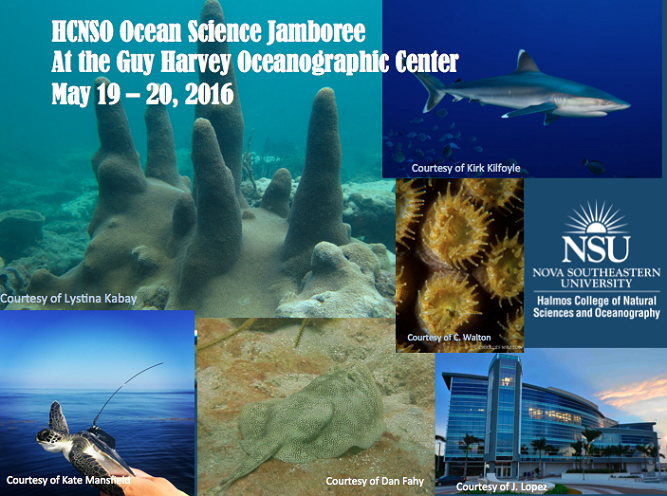Location
Guy Harvey Oceanographic Center Facility
Start
5-19-2016 9:45 AM
End
5-19-2016 10:00 AM
Abstract
A study involving standardized artificial reef modules (ReefballsTM) was conducted in Puerto Morelos, Mexico. The purpose was to explore the use of artificial structure in restoration and mitigation projects in a Caribbean coral reef environment similar to South Florida by applying select experimental treatments hypothesized to accelerate their acquisition of a natural coral reef assemblage. Multiple hypotheses on the progression and interaction between artificial structure and the resulting fish, coral, algal, and non-coral invertebrate assemblages were examined. Each of 40 reefball modules received one of 4 treatments (10 modules/treatment): invertebrate substrate pads, coral transplants, settlement plates, or control. Following deployment, monitoring trips were made on a bi-annual basis for 3 years to assess the development of the biotic assemblages, with a final trip made 6 years post-deployment. At each module divers conducted non-destructive visual counts of fishes to obtain data on total abundance, species richness, size classes, and assemblage structure. Other monitoring work included coral recruitment surveys, invertebrate substrate pad collections, and digital imaging of coral transplants and benthic quadrats. Seasonal variation and patterns of succession were observed. In general there were very few significant differences between experimental treatments and controls, although results indicate that some of the treatments did have an effect on community composition of select species.
Included in
If you build it, will they come? Exploring enhancements to artificial structure for use in restoration and mitigation applications in the Mexican Caribbean
Guy Harvey Oceanographic Center Facility
A study involving standardized artificial reef modules (ReefballsTM) was conducted in Puerto Morelos, Mexico. The purpose was to explore the use of artificial structure in restoration and mitigation projects in a Caribbean coral reef environment similar to South Florida by applying select experimental treatments hypothesized to accelerate their acquisition of a natural coral reef assemblage. Multiple hypotheses on the progression and interaction between artificial structure and the resulting fish, coral, algal, and non-coral invertebrate assemblages were examined. Each of 40 reefball modules received one of 4 treatments (10 modules/treatment): invertebrate substrate pads, coral transplants, settlement plates, or control. Following deployment, monitoring trips were made on a bi-annual basis for 3 years to assess the development of the biotic assemblages, with a final trip made 6 years post-deployment. At each module divers conducted non-destructive visual counts of fishes to obtain data on total abundance, species richness, size classes, and assemblage structure. Other monitoring work included coral recruitment surveys, invertebrate substrate pad collections, and digital imaging of coral transplants and benthic quadrats. Seasonal variation and patterns of succession were observed. In general there were very few significant differences between experimental treatments and controls, although results indicate that some of the treatments did have an effect on community composition of select species.


